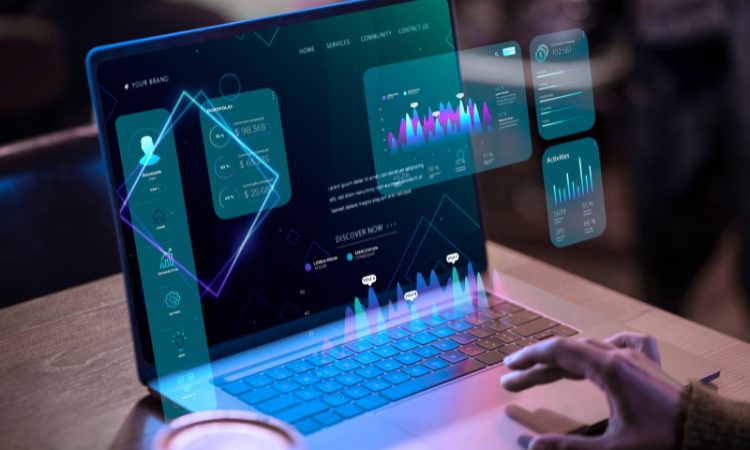Transcribing just one hour of interview data often takes 5–6 hours—a reality check for anyone learning how to collect data for qualitative research, whether you’re a CX leader tracking sentiment, a product manager exploring behavior, or an academic in qualitative research.
Qualitative data is messy, emotional, and richly contextual. Numbers tell you what happened; qualitative research explains why it happened and what it means. This is where quantitative data hits its limits—it can show churn at three months, but not the frustration, unmet expectations, or alternatives behind that decision. That’s why it’s important to use qualitative analysis for early churn detection—it helps you catch warning signs before customers leave, providing context that raw numbers alone can’t reveal.
The real power comes from accessing participants’ thoughts, feelings, and the meanings they assign to experience. You move beyond surface responses to understand the emotional and contextual drivers of behavior—exactly why mastering qualitative data collection matters for VOC professionals, CX leaders, product teams, and researchers.
There are multiple data collection methods for collecting qualitative data. Each serves different goals and contexts, and you can combine approaches in mixed methods research to triangulate findings and strengthen conclusions. The challenge is selecting the right approach for your research questions.
This article walks you through the most effective qualitative methods with practical examples and actionable frameworks—when to use each, how to execute them well, and how to extract insights that actually influence decisions. Let's get started!
TL;DR
- Qualitative research uncovers the ‘why’ behind customer actions, offering emotional and contextual depth that numbers alone can’t capture.
- You can choose from seven qualitative methods—interviews, focus groups, observations, open-ended surveys, case studies, document analysis, and digital methods—each serving distinct research goals.
- Zonka Feedback offers qualitative data analysis by helping you launch open-ended surveys from multiple sources like surveys, chats, and reviews. With AI-powered thematic and sentiment analysis, auto-tagging, and smart dashboards, you can uncover patterns, emotions, and drivers behind customer behavior instantly. Schedule a demo to see it in action.
Perform Qualitative Data Analysis with AI Feedback Intelligence📈
Uncover themes, sentiment, and drivers at scale with Zonka Feedback’s AI Feedback Intelligence. Turn raw feedback into roadmaps, retention strategies, and measurable impact.

Why Qualitative Data Collection Matters
Qualitative data collection captures the human story behind the numbers. Before diving into methods, clarify how qualitative and quantitative data differ—and when each advances your research questions most effectively.
Use qualitative methods when depth beats breadth:
-
Exploring motivations and perceptions: Understand why customers switch or what fuels engagement—beyond scales and checkboxes.
-
Investigating complex phenomena: Journey friction, culture shifts, and UX challenges span interlocking factors surveys can’t capture.
-
Researching sensitive topics: Interviews and focus groups create space and trust for candid stories.
-
Studying real behavior: Observe how people actually use a product versus how they say they use it.
-
Generating hypotheses for future studies: Insights often seed larger quantitative research later on.
When context and meaning drive decisions, qualitative research methods excel. The approach is inherently exploratory—built to surface patterns you didn’t know to look for.
Qualitative Data Collection Methods
Selecting the right qualitative method isn't guesswork—it's strategy. Each approach serves specific research goals, and understanding their trade-offs helps you make better decisions upfront rather than discovering limitations mid-project.
Here's how the seven methods stack up:
| Method | Best for | Strengths | Limitations |
|
Interviews |
Deep personal experiences; sensitive topics; hard-to-reach participants |
Rich nuance; probe for “why”; great for theory building in a qualitative study |
Time-intensive; smaller n; interviewer bias |
|
Focus Groups |
Collective perspectives; language testing; group dynamics |
Interactive insights fast; co-creation; efficient for multiple viewpoints |
Dominant voices; social desirability; scheduling headaches |
|
Observations |
Actual behavior in context; workflow/journey mapping |
Shows what people do (not say); non-verbal cues; finds workarounds |
Observer effect; interpretation drift; access constraints |
|
Open-Ended Surveys |
Scale across geographies; anonymity for sensitive topics |
Qual depth at scale; quick to deploy; pairs with light quant |
Variable response quality; limited probing |
|
Case Studies |
Complex phenomena; multi-stakeholder systems; longitudinal change |
Holistic view; multiple data sources; high decision value |
Resource-heavy; limited generalizability |
|
Document Analysis |
Historical/organizational questions; policy/product comms |
Non-intrusive; fast to start; authentic written voice |
Dependent on what exists; authors’ bias |
|
Digital & Online Methods |
Remote interviews/FGs; diaries; social/community analysis |
Extends reach; cost-effective; async reflection is rich |
Tech barriers; online dynamics differ from in-person |
How to Collect Data for Qualitative Research?
Let’s dive into the qualitative research methods—interviews, focus groups, observations, open-ended surveys, case studies, document analysis, and digital methods and when to use each to collect credible, actionable data.
Method 1: Interviews
Interviews unlock the stories behind your metrics. A dashboard might show 30% onboarding drop-off; interviews reveal the confusion, constraints, and expectations driving it. One-on-one conversations capture nuance that group methods can blur—perfect when you’re collecting qualitative data to understand meaning and motivation.
Formats at a glance (choose based on research design):
-
Structured: Same questions, same order. Great for consistency and cross-case comparisons in tightly scoped research projects. Trade-off: limited flexibility.
-
Semi-structured: A question guide plus probes. Balances comparability with depth; most qualitative researchers prefer this for discovery and clarity.
-
Unstructured: A conversational path guided by a topic. Maximizes depth and participant voice, but requires more time and analytical discipline later.
When interviews make sense?
Use interviews to:
-
Explore non-numerical data (experiences, perceptions, meanings) that surveys can’t surface.
-
Tackle sensitive topics that won’t surface in groups.
-
Reach small or hard-to-recruit study participants via purposive or snowball qualitative sampling.
-
Probe beyond initial answers with follow-ups to refine your research questions.
-
Capture personal narratives you’ll later synthesize in qualitative data analysis.
How to conduct interviews?
-
Clarify objectives: Tie questions directly to your research objectives and theoretical framework (e.g., grounded theory or evaluative work).
-
Build the guide: 10–15 open questions, funnel from broad → specific; add optional probes (“Can you give me an example?”).
-
Pilot fast: Test with 1–2 participants to tune wording and flow.
-
Recruit with intention: Use purposive/maximum-variation sampling to cover perspectives relevant to your research design.
-
Consent & ethics: Explain purpose, recording, privacy; secure storage of raw data/research data.
-
Set the scene: Quiet space (or well-set video call), camera/mic check, rapport warm-up.
-
Listen more than you speak: Use silence, reflective prompts, and clarifying probes to deepen responses.
-
Record + note: Capture audio; take brief notes on context, non-verbals, and emergent themes to aid later data analysis/content analysis.
-
Debrief & memo: Right after, jot analytic memos; this accelerates the coding process when you begin analyzing qualitative data.
Pro tips (from the field)
-
Neutral phrasing beats leading questions. (“What was that like?” > “Why was that difficult?”)
-
One question at a time. Multi-part questions yield thin answers.
-
Mind the sequence. Start easy, save sensitive items for later once trust is built.
-
Close strong. Ask, “What did I not ask that I should have?”—you’ll often unlock the best insight here.
Common Pitfalls (and fixes)
-
Over-scripted delivery → Treat the guide as a compass, not a script.
-
Dominating the conversation → Aim for an 80/20 participant/interviewer split.
-
Inconsistent probing across interviews → Keep a standard probe list for comparability in your research process.
-
Rushing transcription → Accuracy matters; poor transcripts degrade later data interpretation.
Consider this example: A district ran semi-structured interviews with teachers to explore classroom stress. Interviews surfaced two high-leverage themes—resource gaps and peer support—that correlated with student engagement issues. The team translated findings into concrete changes (shared materials hub, new peer-support cadence), then validated impact in follow-up qualitative and quantitative research. That’s interviews turning qualitative data into actionable insights.
Where interviews fit among methods: Pair interviews with focus groups when you want both personal depth and group dynamics, or with document analysis when you need organizational context. Together, these data collection methods give you the richest picture of the research phenomenon.
Method 2: Focus Groups
Focus groups surface what one-on-one interviews can miss: group dynamics. Put 7–10 carefully selected research participants in a guided discussion and ideas compound—people react to, refine, and sometimes challenge each other’s views. For teams learning how to collect data for qualitative research, this is a fast way to collect data that reveals shared language, social cues, and points of friction at scale.
How focus groups work?
-
Moderator-led conversation: A trained facilitator uses an open-ended guide, moving from broad to specific research questions.
-
Structure with flexibility: Plan ~60–90 minutes to explore themes without fatigue.
-
Deliberate composition: Recruit by segment (e.g., power users, recent churners) to fit your research design and research objectives.
-
Artifacts welcome: Stimuli (screens, packaging, ads) can prompt rich reactions you won’t get from surveys.
-
Recording & consent: Standardize privacy language and capture high-quality audio/video for later qualitative data analysis.
When to use focus groups
-
You need language, norms, and consensus vs. divergence around a topic.
-
You’re testing early concepts and want rapid, comparative feedback across rounds.
-
You’re prioritizing issues before deeper qualitative interviews or a follow-on quantitative study.
-
You’re running mixed methods research, pairing qualitative and quantitative data for triangulation.
Facilitation best practices (field-tested)
-
Right moderator, right tone: Empathetic, neutral, skilled at reading group dynamics.
-
Inclusive airtime: Invite quieter voices (“Let’s hear from someone who hasn’t spoken yet”), manage over-talkers politely.
-
Neutral prompts: “Walk me through that,” “What else?” keep bias out and gain insights you didn’t expect.
-
Room setup & tech: Circle seating in-person; online, set norms (mute, hand-raise, chat). Plan 1–2 breaks for >60 minutes.
-
Warm-up → deep dive → wrap: Start easy, progress to evaluative tasks, end with “What did we miss?”
Pro tips
-
Split groups intentionally: Run separate sessions by segment to avoid social pressure (e.g., new vs. expert users).
-
Use laddering and projectives: “If this product were a person…” elicits non-numerical data that surveys can’t.
-
Document decisions: Log how data collected will feed the analysis process, coding frame, and final research findings.
Common pitfalls (and fixes)
-
Groupthink: Use silent sticky-note rounds or chat responses before open discussion.
-
Moderator bias: Pilot your guide; stick to neutral language.
-
Shallow answers: Add probes (“Can you share a specific example?”) and short individual reflections mid-session.
For instance, a health team ran six focus groups on barriers to behavioral health. The group discussion revealed cost confusion, stigma, and scheduling friction; participants built on each other’s stories to surface concrete fixes (clear sliding-scale info, integrated care, flexible hours). Interviews alone flagged “cost,” but focus groups exposed how pricing, language, and logistics interact—actionable inputs for policy change.
Where focus groups fit among qualitative research methods: Pair with interviews and focus groups sequencing (groups first for breadth, interviews after for depth), and with document analysis to compare what organizations say versus what communities experience. As part of your data collection methods, they’re a powerful bridge between exploration and validation in the research process.
Method 3: Observations
If you’re learning how to collect data for qualitative research, observations show what people actually do—not what they say they do. By conducting observations, you bypass recall gaps and social desirability, capturing rich non-numerical data (routines, workarounds, body language) that interviews and surveys often miss. It’s a cornerstone qualitative data collection method in social science research, UX, and health services research.
2 Approaches (pick for your research design):
-
Participant observation — You join the setting (e.g., shadow a support agent, sit in a clinic back office). You gain insider context and tacit knowledge but must actively manage role boundaries and bias.
-
Non-participant observation — You stay separate and unobtrusive (e.g., watch a checkout queue, observe a classroom). You preserve distance and detail-focus, but may miss what only insiders perceive.
What to record (systematic, not sporadic):
-
Environmental context: physical layout, signage, tools, spatial flow—factors that shape behavior.
-
Behavioral patterns: the timeline of events, group dynamics, handoffs, errors, recoveries; both verbal and non-verbal cues.
-
Actor perspectives: quick intercept notes (“What happened there?”) when appropriate with research participants.
-
Artifacts & traces: checklists, forms, screenshots, photos of whiteboards (respect privacy).
-
Researcher reflections: immediate memos about assumptions, surprises, and emerging themes—fuel for later qualitative data analysis and data interpretation.
Ethics & rigor (protecting study participants):
-
Consent & privacy: public vs. private spaces matter; set expectations and anonymize research data.
-
Observer effect: your presence can alter behavior; plan longer windows or repeat visits so routines normalize.
-
Reflexivity: log your stance and potential bias; debrief with the research team after each session.
-
Data security: secure storage for recordings/notes; consistent pseudonyms across the research process.
How to run high-quality observations:
-
Align on research questions and success criteria (what decisions will this inform?).
-
Sampling plan: choose sites, times, and roles (purposive or theoretical sampling if you’re doing grounded theory).
-
Create an observation guide: behaviors to watch, event triggers, and a field-notes template.
-
Pilot once: adjust vantage points, timing, and note-taking load.
-
Capture data cleanly: timestamped notes + optional audio/video (where appropriate) to aid later content analysis.
-
Immediate memoing: right after each session, log patterns and questions to accelerate the coding process when analyzing qualitative data.
-
Triangulate: pair with qualitative interviews, focus groups, or document analysis to validate what you saw.
-
Synthesize: convert observations into workflows, journey maps, failure modes, and prioritized fixes—clear actionable insights.
Pro tips
-
Rotate vantage points (front desk vs. back office) to avoid blind spots.
-
Use short “silent rounds” first to reduce moderator influence, then interact.
-
Time-sample peak vs. off-peak to compare conditions (great for a mixed qualitative and quantitative research design).
Common pitfalls (and fixes)
-
Only “watching” without structure → Use a checklist + timestamps to support later data analysis.
-
Over-interpreting on the fly → Separate description from interpretation in notes; interpret later with the team.
-
Sampling only convenient moments → Plan multiple windows to avoid skewed data collected.
Mini-examples (value in action)
-
Retail floor: Weekend observations revealed age-based assumptions about product expertise and a fragile returns handoff. Findings guided on-floor signage, training, and staffing patterns—changes later verified by a short open-ended survey.
-
Clinic flow (physician–patient interactions): Shadowing revealed charting bottlenecks at triage, not with physicians; small EHR template tweaks cut cycle time without adding burden—insight interviews alone hadn’t surfaced.
Use a consistent field-notes template, lightweight time-stamps, and a secure repository. After sessions, tag notes by theme in your qualitative analysis workspace. If you’re running intercept prompts or post-visit feedback, Zonka Feedback can capture quick open-ended inputs on mobile/kiosk and route them into your data collection and analysis pipeline, keeping observations, micro-surveys, and follow-ups in one place.
Where observations fit among your data collection methods: They pair naturally with interviews and focus groups (to explain why a behavior happens) and with quantitative methods (to size the impact). Observations turn everyday routines into evidence you can act on in your next research project.
Method 4: Open-Ended Surveys
If you’re exploring how to collect data for qualitative research, open-ended surveys bridge depth and scale. Unlike fixed-choice items, they let research participants answer in their own words—yielding rich qualitative data across hundreds or thousands of voices. They complement interviews and focus groups and fit neatly into mixed methods research alongside quantitative data.
When they make sense
-
You need geographically dispersed input across time zones.
-
Sensitive topics benefit from anonymity.
-
You want more cases than interviews can cover, but still need context you can analyze with qualitative research methods. Avoiding mistakes in analyzing qualitative customer feedback here is crucial—misinterpretation or shallow coding can lead to flawed insights and weak decision-making.
-
You’re validating themes from earlier sessions before committing resources.
Designing questions that generate insight
-
Clarity beats cleverness: Plain language tied to your research questions.
-
Weak: “Share thoughts on feature X.”
-
Strong: “Describe a recent moment when feature X helped—or got in your way.”
-
-
Neutrality prevents bias: Avoid presupposing positive/negative.
-
Weak: “Why do you love our new layout?”
-
Strong: “What works about the new layout? What doesn’t?”
-
-
Depth drives action: Funnel broad → specific, then prompt for examples.
-
Add probes: “What changed as a result?” “Please include a concrete example.”
-
Sampling & distribution
-
Use purposive lists (e.g., power users, churn-risk cohorts).
-
Keep mobile-first; 3–6 open items max.
-
Time it right (post-event, post-purchase, or after support).
-
Offer light incentives; explain how research data will be used.
-
For longitudinal work, schedule waves to capture trend shifts.
Data collection process → analysis process
-
Tag responses by segment at capture (plan your taxonomy upfront).
-
Begin content analysis with quick, structured coding; memo themes as you go.
-
Move from codes → categories → themes for qualitative data analysis/analyzing qualitative data.
-
Quantify themes (counts, co-occurrences) to pair qualitative and quantitative data in one narrative.
-
Export to NVivo/ATLAS.ti if needed; retain an audit trail for reporting qualitative research.
Pro tips
-
Mix one or two targeted Likert items with open text to aid data interpretation.
-
Use branching: show follow-ups only when relevant (keeps fatigue low, insight high).
-
Add an “anything else we should know?” closer—often the gold appears here.
Common pitfalls (and fixes)
-
Wall-of-text fatigue: Limit items; set expectations (“~5 minutes”).
-
Vague prompts → vague answers: Use time-anchored phrasing (“in the last two weeks…”).
-
Messy downstream analysis: Align tags and codes with your research design before launch.
Consider this example: A software team ran an open-ended survey on virtual-meeting impact. Responses surfaced patterns missed by metrics: notification anxiety after hours, cognitive load from constant switching, and screen-share friction. Those insights prioritized “quiet hours,” batch notifications, and simplified presenter tools—clear actionable insights no multiple-choice survey would have revealed.
Zonka Feedback offers templates for qualitative data collection with branching, multilingual prompts, and auto-tagging. Responses slot into dashboards for quick theme counts, then hand off smoothly to deeper data collection and analysis (coding, trend charts) so your research project moves from capture to decision fast.
Where open-ended surveys fit among your data collection methods: Use them to scale hypotheses from interviews/FGs, then size themes with a follow-on quantitative study. Together, these approaches make your research process faster, clearer, and more defensible.
Method 5: Case Studies
If you’re exploring how to collect data for qualitative research, open-ended surveys bridge depth and scale. Unlike fixed-choice items, they let research participants answer in their own words—yielding rich qualitative data across hundreds or thousands of voices. They complement interviews and focus groups and fit neatly into mixed methods research alongside quantitative data.
When they make sense
-
You need geographically dispersed input across time zones.
-
Sensitive topics benefit from anonymity.
-
You want more cases than interviews can cover, but still need context you can analyze with qualitative research methods.
-
You’re validating themes from earlier sessions before committing resources.
Designing questions that generate insight (and clean analysis later)
-
Clarity beats cleverness: Plain language tied to your research questions.
-
Weak: “Share thoughts on feature X.”
-
Strong: “Describe a recent moment when feature X helped—or got in your way.”
-
-
Neutrality prevents bias: Avoid presupposing positive/negative.
-
Weak: “Why do you love our new layout?”
-
Strong: “What works about the new layout? What doesn’t?”
-
-
Depth drives action: Funnel broad → specific, then prompt for examples.
-
Add probes: “What changed as a result?” “Please include a concrete example.”
-
Sampling & distribution (practical guidance)
-
Use purposive lists (e.g., power users, churn-risk cohorts).
-
Keep mobile-first; 3–6 open items max.
-
Time it right (post-event, post-purchase, or after support).
-
Offer light incentives; explain how research data will be used.
-
For longitudinal work, schedule waves to capture trend shifts.
Data collection process → analysis process
-
Tag responses by segment at capture (plan your taxonomy upfront).
-
Begin content analysis with quick, structured coding; memo themes as you go.
-
Move from codes → categories → themes for qualitative data analysis/analyzing qualitative data.
-
Quantify themes (counts, co-occurrences) to pair qualitative and quantitative data in one narrative.
-
Export to NVivo/ATLAS.ti if needed; retain an audit trail for reporting qualitative research.
Pro tips
-
Mix one or two targeted Likert items with open text to aid data interpretation.
-
Use branching: show follow-ups only when relevant (keeps fatigue low, insight high).
-
Add an “anything else we should know?” closer—often the gold appears here.
Common pitfalls (and fixes)
-
Wall-of-text fatigue: Limit items; set expectations (“~5 minutes”).
-
Vague prompts → vague answers: Use time-anchored phrasing (“in the last two weeks…”).
-
Messy downstream analysis: Align tags and codes with your research design before launch.
Consider this example: A software team ran an open-ended survey on virtual-meeting impact. Responses surfaced patterns missed by metrics: notification anxiety after hours, cognitive load from constant switching, and screen-share friction. Those insights prioritized “quiet hours,” batch notifications, and simplified presenter tools—clear actionable insights no multiple-choice questions would have revealed.
Zonka Feedback offers templates for qualitative data collection with branching, multilingual prompts, and auto-tagging. Responses slot into dashboards for quick theme counts, then hand off smoothly to deeper data collection and analysis (coding, trend charts) so your research project moves from capture to decision fast.
Where open-ended surveys fit among your data collection methods: Use them to scale hypotheses from interviews/FGs, then size themes with a follow-on quantitative study. Together, these approaches make your research process faster, clearer, and more defensible.
Method 6: Document and Text Analysis
If you’re figuring out how to collect data for qualitative research, don’t overlook what’s already on your desk. Document analysis and text analysis let you extract insight without new fieldwork—perfect for time-sensitive projects, historical questions, or triangulating a qualitative study alongside interviews and focus groups. Unlike a purely quantitative study, you’re interpreting non-numerical data to explain context, meaning, and intent—then feeding those findings into your broader research process and research design.
Common source types (each reveals a different layer of truth):
-
Personal documents: diaries, letters, emails—authentic voice and emotion from study participants.
-
Organizational materials: policies, SOPs, meeting minutes, roadmaps—how things actually run versus how they’re described.
-
Public records: court transcripts, government reports, census briefs—institutional narratives useful in health research and social science research.
-
Digital sources: social posts, forum threads, reviews, support tickets, app-store comments—real-time, unfiltered research data from “multiple voices.”
-
Existing research artifacts: focus group discussions and qualitative interviews transcripts, usability notes, and observation logs—great for data collection and analysis continuity.
How to analyze text:
-
Frame the question & corpus
Tie sources to clear research questions and research objectives. Decide your unit of analysis (sentence, paragraph, document). -
Prepare the corpus
De-duplicate, redact PII, normalize formats; log decisions for reporting qualitative research (audit trail). -
Coding process
Start with descriptive/in-vivo codes; evolve to pattern/theme codes. If using grounded theory, move through open → axial → selective coding. Keep a living codebook (definitions, inclusion/exclusion rules) for your research team. -
Content analysis / thematic analysis
Cluster codes into categories → themes that answer the question. Add light counts/co-occurrence matrices to pair qualitative and quantitative data in one narrative (helpful for stakeholders used to quantitative analysis). -
Quality checks
Do peer debriefs, intercoder calibration, and memoing to surface assumptions. Document choices so your analysis process is transparent and reproducible. -
Synthesis → decisions
Translate themes into policies, workflows, and product requirements—actionable insights that move your research project forward.
Pro tips (from qualitative work in the wild):
-
Sample with intention: purposive or theoretical sampling ensures coverage of key time periods/segments.
-
Mind versioning: policy V3 ≠ V5; track dates so you don’t conflate changes.
-
Define the unit early: paragraph vs. sentence influences your data coding granularity.
-
Triangulate: validate themes against interviews, conducting observations, or light metrics—classic mixed methods research.
Common pitfalls (and quick fixes):
-
Coding everything that moves → Code to your question, not to the document’s length.
-
Confirmation bias → Schedule a “counter-evidence” pass to seek disconfirming examples.
-
Messy metadata → Create a simple sheet for doc title, author, date, source, segment.
-
Jumping to conclusions → Separate description from interpretation in notes; synthesize last.
Consider this example: A hospital network analyzed its COVID policy docs across sites. Content analysis showed inconsistent mask guidance and jargon-heavy memos. After rewriting in plain language with visuals, compliance measurably improved and staff questions dropped. The kicker: the gap emerged from documents themselves—interviews alone hadn’t exposed the day-to-day contradiction.
Where document analysis fits among your data collection methods: It’s a fast, rigorous way to mine existing raw data, then align with field learnings from interviews and focus groups. Used well, it reduces re-recruitment, accelerates decisions, and strengthens the chain from data collection to research findings.
Method 7: Digital & Online Methods
If you’re exploring how to collect data for qualitative research, digital channels expand reach, reduce cost, and open entirely new data collection methods—from virtual interviews and focus groups to social listening and diary studies. They’re not “less than” in-person; they’re different: online group dynamics skew toward structured turn-taking, and asynchronous inputs surface reflective detail you rarely get live.
What’s in the toolkit (and when to use each)
-
Virtual interviews & focus groups: Zoom/Meet sessions with a clear guide, breakout rooms, and chat for quieter voices. Use when you need depth or group discussion across geographies in a single sprint.
-
Asynchronous diaries & video journals: Participants log moments over days/weeks (screenshots, short clips, voice notes). Ideal for longitudinal behaviors, sensitive topics, or when you want non-numerical data captured in context.
-
Social media & community analysis: X/Reddit/forums/reviews expose naturally occurring talk. Great for exploratory investigations, early signal detection, and triangulating research findings—but align with platform ToS and consent norms.
-
Remote observation / screen share shadowing: Watch real workflows (support calls, onboarding) without travel. Pairs well with task prompts to “think aloud.”
-
In-product open-ended prompts: Lightweight text questions triggered by events (e.g., post-checkout). Useful for high-volume, event-tied collecting qualitative data.
How online differs (and how to adapt)
-
Cognitive load & pacing: Go slower, add micro-breaks after ~50–60 minutes; summarize often.
-
Participation balance: Use chat, hand-raise, polls to include more study participants; invite “someone we haven’t heard from” explicitly.
-
Artifacts on screen: Shared docs, prototypes, and journey maps make digital sessions highly interactive—great for content analysis later.
-
Accessibility: Offer captions, phone dial-in, and flexible timings across time zones to reduce sampling bias.
Designing your digital research process (practical guidance)
-
Clarify research questions & research design: which decision needs evidence.
-
Sampling plan: purposive/maximum-variation; consider theoretical sampling for grounded theory work.
-
Prep & onboarding: tech checks, norms (mute/turn-taking), consent language, privacy steps—document for reporting qualitative research.
-
Run sessions: time-boxed, stimulus-rich, and probe-ready; capture chat as part of the raw data.
-
Data collection and analysis: Export recordings/transcripts; begin data coding; move to themes with qualitative data analysis; quantify theme frequency to pair qualitative and quantitative data in one narrative.
-
Synthesis: Translate into flows, policies, or requirements and link to KPIs for light quantitative analysis.
Social listening & digital text: turning noise into insight
-
Define your corpus (keywords, time windows), then apply a lean coding process.
-
Use content analysis to map sentiment, topics, and co-occurrences; validate patterns against your active sample (e.g., qualitative interviews).
-
Remember: unlike quantitative research, your aim is data interpretation—context and meaning first, counts second.
Ethics & quality in online work
-
Informed consent & privacy: Clarify recording, storage, anonymization; avoid collecting PII you don’t need.
-
Platform policies: Respect ToS for scraping/exports; cite sources in reporting qualitative research.
-
Inclusion: Digital methods can exclude low-connectivity participants; provide alternatives (phone interviews, SMS prompts) to protect validity.
-
Bias checks: Compare segments (device, locale, accessibility needs) to spot skew in data collected.
Pro tips
-
Mix synchronous (FGs/interviews) with asynchronous (diaries) to catch both immediacy and reflection.
-
Start groups with a 90-second silent prompt in chat to curb groupthink.
-
For health research or physician–patient interactions, use de-identification workflows and secure storage approved by your org.
-
Add one or two structured items (Likert) to open-ended prompts to aid downstream analysis process and stakeholder readouts.
Common pitfalls (and fixes)
-
Tech derailments: Send pre-session checks; have a phone backup.
-
Dominant voices online: Use round-robin and time-boxed shares; capture parallel chat.
-
Shallow answers in forms: Time-anchor prompts (“In the last 7 days…”) and ask for one concrete example.
-
Data sprawl: Standardize filenames/metadata; keep an audit trail for your research team.
Consider these examples:
-
SaaS diary study: 3-week async logs revealed “notification stacking” as the real driver of fatigue; change log led to bundled alerts—usage improved.
-
Community analysis: Forum threads surfaced unmet expectations in onboarding docs; quick doc rewrites reduced tickets—confirmed in a follow-up quantitative study.
-
Remote shadowing: Screen-share sessions uncovered copy–paste errors between tools; a small integration eliminated rework—fast, actionable insights without travel.
Zonka Feedback offers in-product open-ended prompts, post-event microsurveys, screeners/scheduling for virtual focus group discussions, and auto-tagging to accelerate qualitative analysis and reporting qualitative research.
Where digital fits among your qualitative approaches: It extends classic research methods—not replaces them. Blend online sessions with conducting observations and document analysis for stronger triangulation, and pair with light quantitative methods to size what you find. That’s modern, defensible qualitative work from data collection to decision.
Conclusion
You’ve now got a clear idea for how to collect data for qualitative research: pick from seven proven qualitative research methods and match each to your research questions, timeline, and stakeholders. The win comes from fit, not flash: combine 2–3 methods, plan your coding and qualitative data analysis upfront, and translate findings into actionable insights your team can ship.
Keep standards high: quality beats quantity, ethics aren’t optional, and a tight audit trail (consent, confidentiality, reflexivity) makes your conclusions credible. Triangulate evidence, validate themes, and pair qualitative takeaways with light quant to move decisions forward with confidence.
Schedule a demo of Zonka Feedback to scale qualitative data collection. Launch mobile-friendly open-ended surveys and in-product prompts, unify text feedback from surveys, chats, tickets, and reviews, then use AI-powered thematic & sentiment analysis with auto-tagging to turn raw comments into prioritized themes, workflows, and actions.











